History
This post was inspired by and adapted from a Royal Horticultural Society podcast in December 2020. It is interesting to explore the plants we have come to associate with the Holiday season, and how they got to be the chosen plants. Their history of use stretches way back before Christianity and Christmas itself and the purpose of this post is to share the history.
Long before Christianity reached Europe, people used evergreen plants to decorate their homes for winter and also to celebrate the winter solstice. The Druids, Celts, and Romans believed them to be magical because they would keep their leaves and promised the return of spring. Three very common and old plants that have their beginnings in the winter and solstice celebrations are holly, ivy, and mistletoe.
Holly

The Druids believed holly to be a symbol of fertility and eternal life. The Romans associated it with the God of agriculture and harvest, Saturn. Bunches of Holly would be hung outside their homes at the festival of Saturnalia. Later, the Christians adopted the practice of using holly as a symbol of good luck and celebration. Holly was said to hold male energies, while ivy has female energies. The two were often used together, pre-Christianity. Since holly had a masculine symbolism, it was absorbed into the Christen culture of Christmas. The sharp leaves are said to represent Christ’s crown of thorns and the red berries, his blood.
Ivy

Traditionally worn by Dionysis who was the Greek God of wine and revelry. Ivy was hung on poles outside of the public houses to signal that beer and wine were sold at that establishment. While not very popular in the US, except at Christmas, it is in Europe and it is even used medicinally to treat arthritis. Ivy has not been adopted into Christmas with religious symbolism, but is common because of its evergreen properties and is used for decorations and wreaths.
Read more on the history of ivy here.
Mistletoe
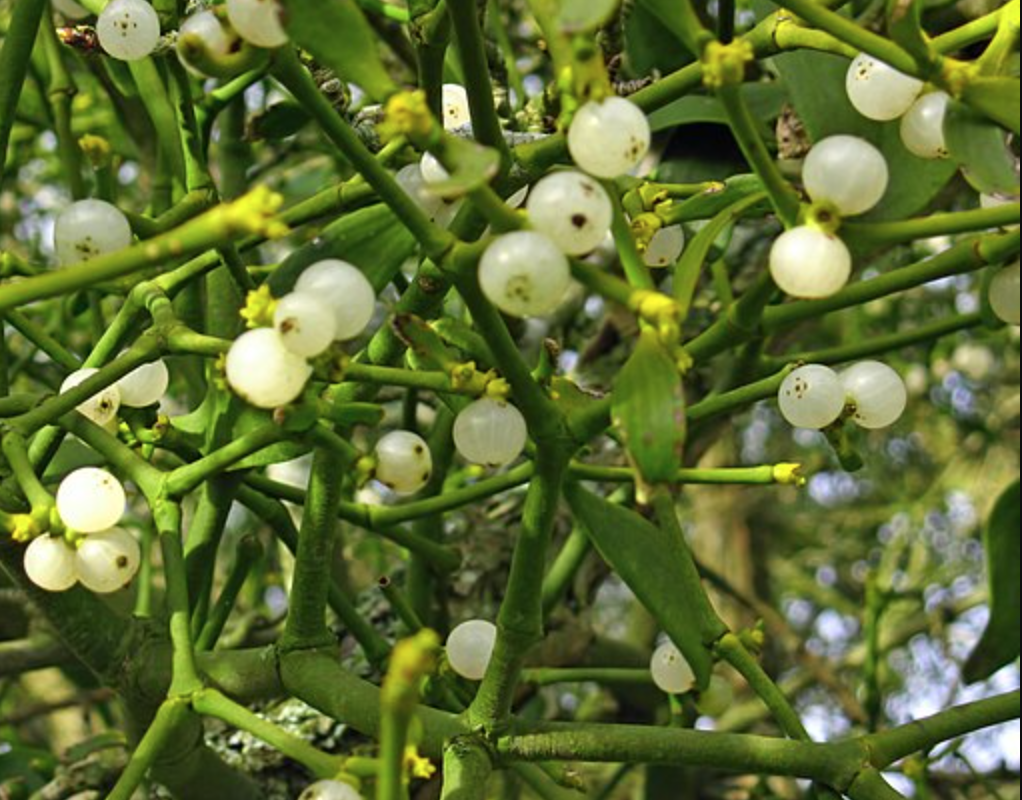
Everyone is familiar with the tradition of kissing under the mistletoe, but how did this plant get to be associated with Christmas and this practice? Mistletoe is hemiparasitic, meaning they have green leaves and can photosynthesize. They rely on a host plant for water and some minerals. Pre Christianity, it was seen as a symbol of fertility and used to cure a number of ailments. Many cultures also attributed magical powers to the plant, and the Romans believed it to be a symbol of friendship and peace. Legends state that enemies who met under the mistletoe would lay down their weapons and embrace each other. However, it is Norse Mythology and the story of Frigg that is credited with this custom of kissing under the mistletoe. Frigg was the Norse Goddess of love and fertility, patron of marriage, and the wife to Odin. When her son Baldr dreams of his impending death, Frigg exacts promises for all things to do no harm to her son. However, she forgets the mistletoe, and Baldr is killed by an enemy arrow made from mistletoe. In one version of the story, she proclaims the mistletoe a symbol of love so that it can do no more harm. In a more cheery version, she is said to weep over her son and as her tears fall upon the mistletoe arrow, it is transformed into small white berries. Baldr is miraculously alive and Frigg vows that anyone standing beneath the mistletoe will come to no harm. Instead, they would receive a token of love… A kiss
Poinsettia

A Mexican legend suggests that a young girl named Pepita was sad that she was unable to get a gift for the baby Jesus. Her cousin comforted her by telling her any gift she got would be welcomed. On the way to the church she picked a bunch of weeds and left them as a gift at the bottom of the Nativity. It is believed they were transformed into beautiful red flowers. They have since been known as “Flores De Noches Buena”.
However, poinsettias date back to the days of the Aztecs. It was called Cuetlaxochitl at at that time and the Aztecs were the first to cultivate these plants. The bracts were used for red dye, and the sap was used to control fevers. In the 17th century that Cuetlaxochitl, now an established decorative plant in Mexican tradition, began its journey into Christmas traditions.
It began in the small town of Taxco de Alarcon, Mexico where Franciscan monks began using the shrub in their Nativity processions. Coincidentally, around this time the Mexican legend of Pepita and the “Flowers of the Holy Night” as mentioned above began circulating. The red and green shrub was now tied to Christmas folklore.
Poinsettias are native to Central America and particularly Southern Mexico. There is no denying that their bright red color is very much in line with Holiday colors. The “ flowers” of the poinsettia are also said to be symbolic of the Star of Bethlehem.
Poinsettias are in the Euphobia family, the botanical name is Euphorbia pulcherrima. The red “Flowers” are not actually flowers but leaves called bracts. The color change occurs when the weather changes and the days start to get shorter.
In the 19th century, a florist and horticulturist named Robert Buist wrote the eponym, Joel Poinsett about the poinsettias namesake. Buist and a Scottish colleague would name a plant with showy flame leaves after Joel Poinsett. Poinsett brought specimens of plants to his home in Mexico in the 1820’s. Some of the cuttings were sent to Philadelphia and in particular Buist. In the 1950’s poinsettias debuted at holiday gatherings because of their showy red bracts. It has since been around every Christmas season.
Amaryllis
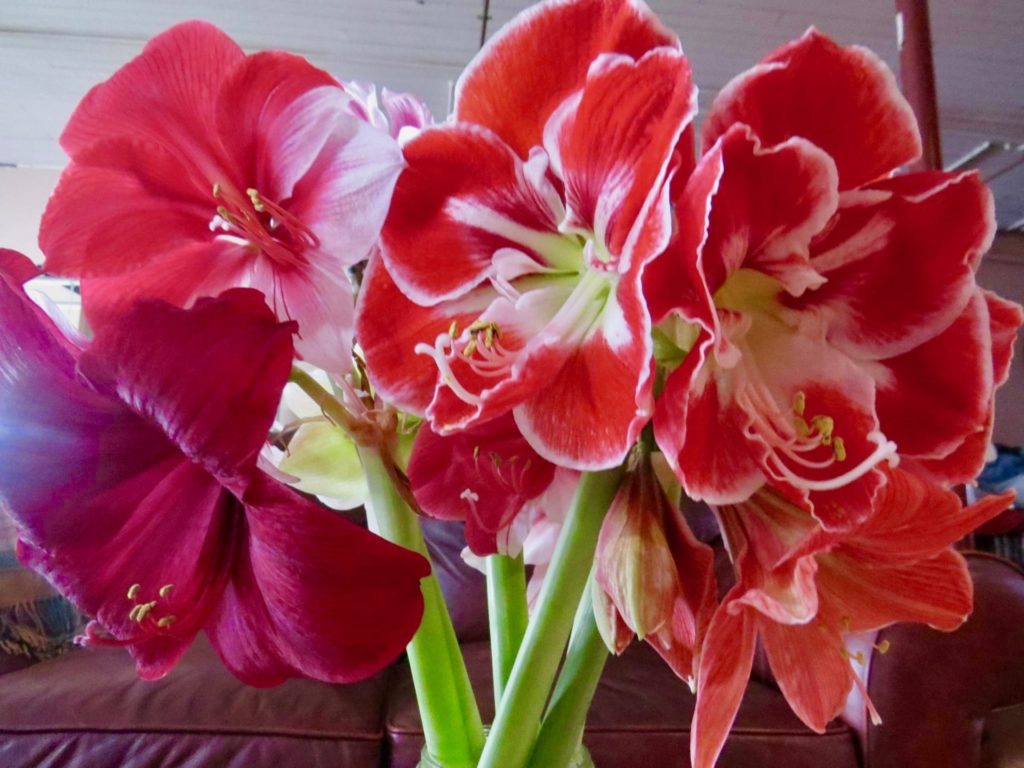
The amaryllis has become associated with Christmas and is often given as gifts. The botanical name Hippeastrum is important in the history of this one. It was named after a nymph who fell in love with a gardener, who pierced her heart with a golden arrow every night. It was named by the father of horticultural taxonomy, Carl Linneus. It was believed Carl described a plant as amaryllis naming it after this nymph, however, there was confusion over whether he was describing a plant from South Africa or South America. Eventually, it was established that he was, in fact, describing a plant from South Africa, Amaryllis really being Hippeastrum from South America. Therefore the proper name is Hippeastrum but it is known as amaryllis. It is popular at Christmas because it is easy to force blooming in December and it does put on a spectacular elegant display of flowers. In nature Hippeastrums flower in March.
Christmas Tree

The most central symbol of Christmas decor! The history of the Christmas tree dates back to the symbolic use of evergreens in Egypt, Roman, Nordic cultures and, Germany. Evergreen boughs were used to decorate and celebrate the winter season before Christianity. Germany however, is credited with starting the tradition of a Christmas tree in the 16th century. Lighted candles were also added to the tree at this time,
Everyone appreciates the magnificent resinous scent of a fresh tree. However cut trees are not sustainable. Instead, opt for a live tree, that is grown in a pot. Repot into something large each year after the holiday season. It will be good for at least five years as a potted tree. Keep in a semi-shaded area and keep consistently moist during the summer. Look for Adopt-a-Christmas Tree programs. This type of program allows you to adopt a live tree for the holiday season, after which it is returned to the tree farm where it can continue to grow on and can out the next year. Keep your tree cool and well-watered indoors. The heat inside can dry them out quite quickly. They will only do well inside for about two weeks before they need to be back outside. Acclimate them by putting them into a garage for a few days before taking them out into the cold. Feed well and plant up in rich soil. Make sure all sides get equal sun on the tree will grow unevenly.
Christmas Cactus
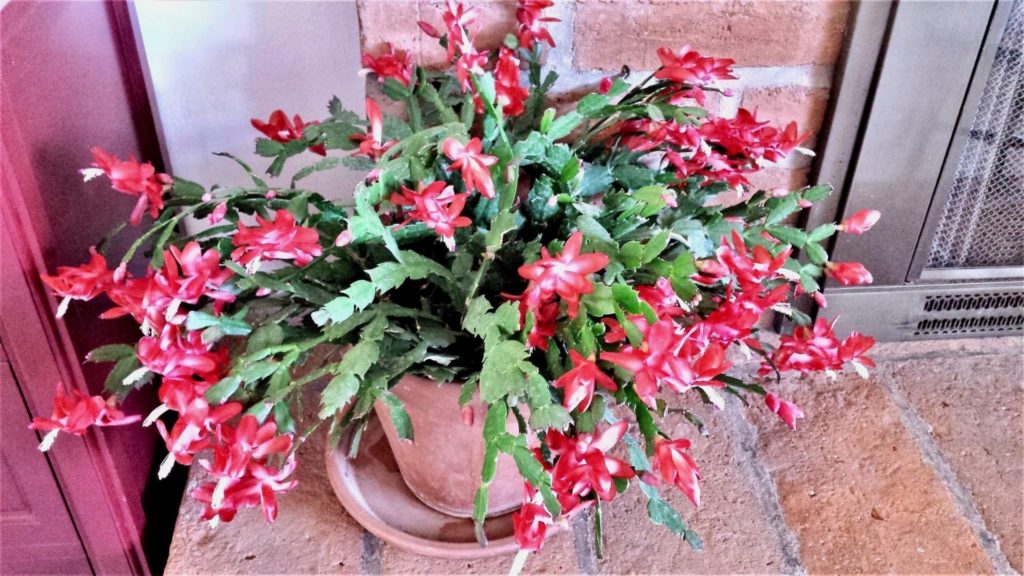
Another popular flowering Christmas plant. The Christmas cactus is not an actual cactus but rather a succulent. They originate in Brazil and grow in jungle environments. The leaves store moisture and they grow in the treetops, in bark and moss. In their natural environment, they flower in April and May. As an indoor plant, they flower around the Holiday season. It is beneficial to up-pot them every 2 years, and in the case of the Christmas cactus, do not up pot into a container too much larger. A larger container will hold more water and too much moisture can be an issue for the Christmas Cactus. Use a well-draining cactus mix. Once they are done flowering, they need a rest period. Move them to a cooler room and water much less. In April, increase watering slightly and move them to a brighter area. Do not forget to feed to get good flowering the next season. As the buds start to form again, they will need a bit more water.
Cyclamens

These stunning flowers that resemble butterfly wings come in pinks, reds, and whites. They have attractive heart-shaped foliage and bring color indoors and make lovely gifts. Cyclamens are bulbing plants and bloom during winter, making them perfect for the holiday season. They prefer a bright light if kept indoors so place them by a sunny window. They tolerate cold quite well too, down to 35 degrees Fahrenheit, therefore they are also excellent for winter color in the garden. Keep them well watered and fertilize monthly to keep them blooming. Once the flowers and foliage die back, keep them in a cool place and water occasionally to keep the bulbs plump. Repot in rich soil in the fall and begin to water again.
Paperwhites
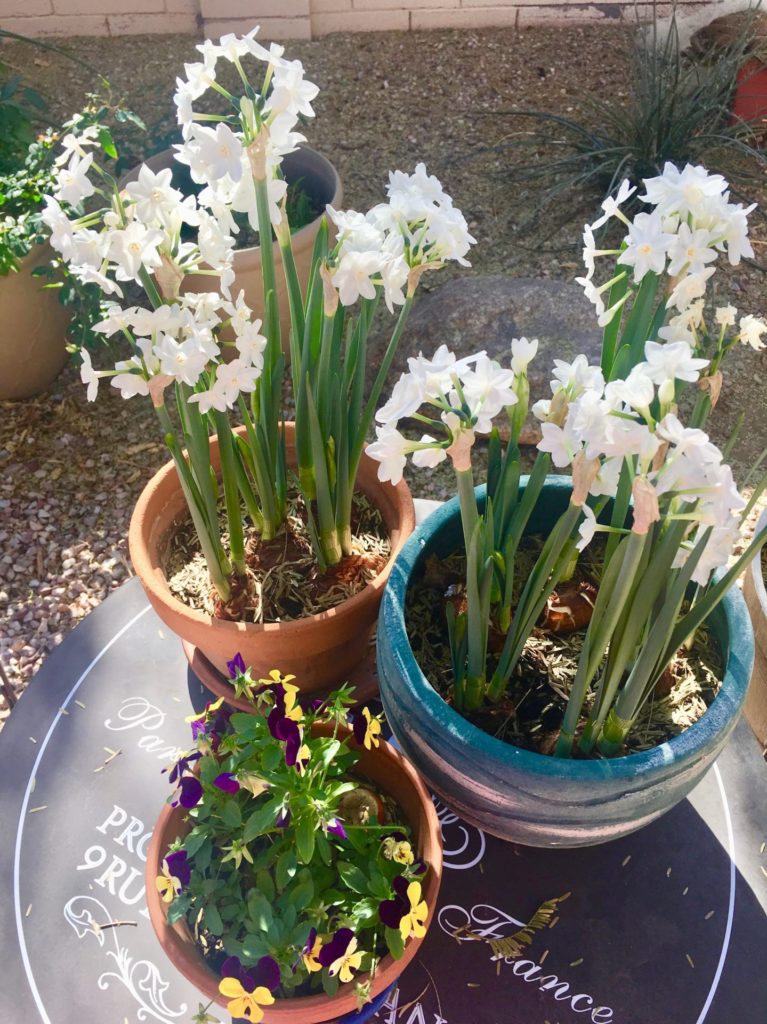
Paperwhites belong to the narcissus family called jonquils. They are heavily scented and very common during the holiday season. The difference between paperwhites and white daffodils is that true paperwhites have a cluster of flowers on each stem and flower much sooner than daffodils. The bulbs are very easy to grow, and flower 6 weeks after they start to receive water. Like the amaryllis, they are easy to force, make lovely gifts, and the white color works as holiday decor. They will need some sunlight to flower. Ziva is a variety that blooms early and is the most popular. After using for indoor displays they can be moved outside. Fertilize with a high phosphorus feed after blooming. Allow the foliage to die back naturally. Water occasionally through the summer to prevent the bulbs from completely drying out. They will bloom again the following winter.
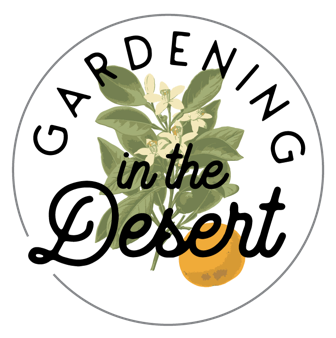
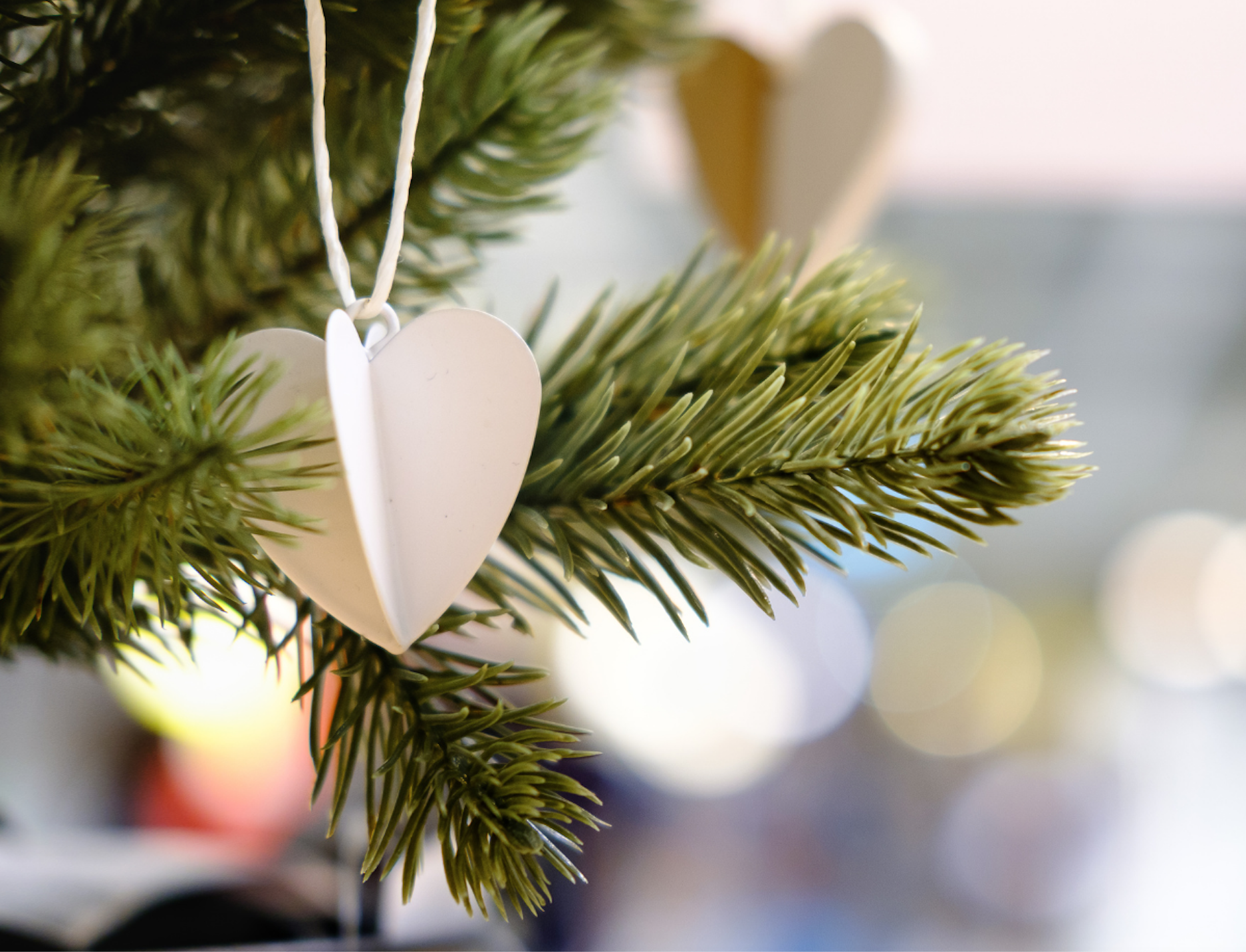
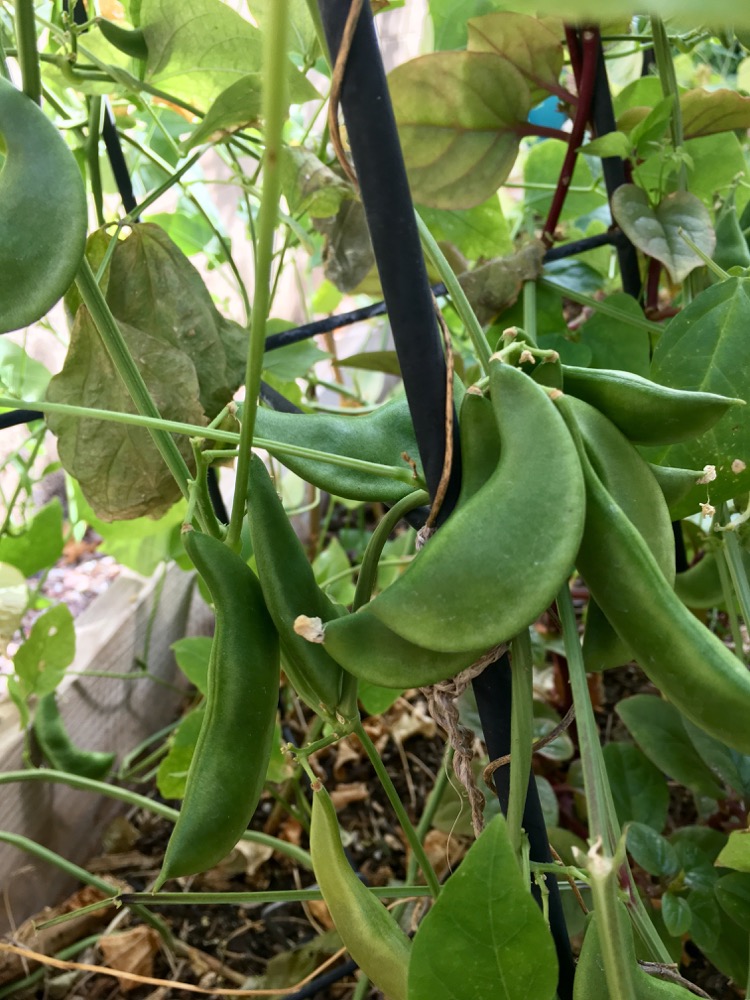

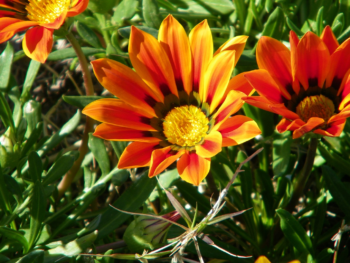
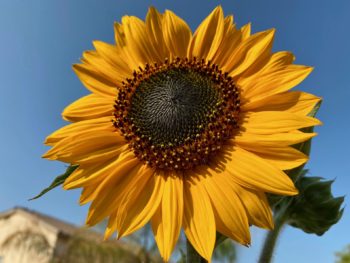

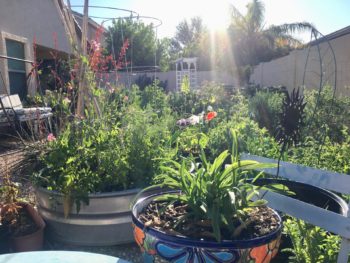
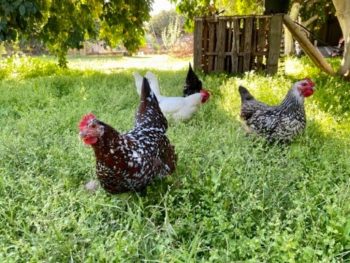
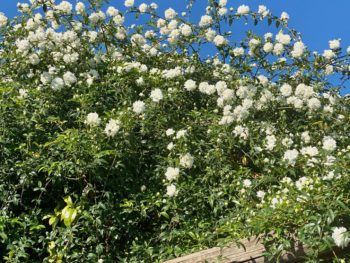
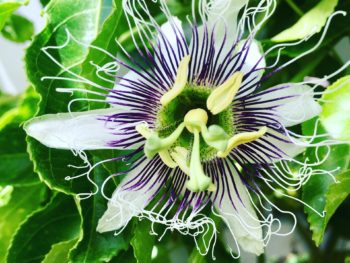
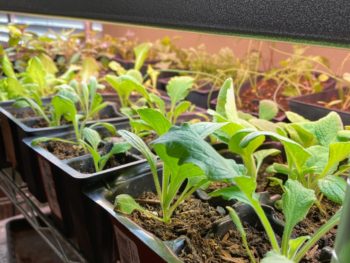
 How To Grow Garlic In The Desert Garden
How To Grow Garlic In The Desert Garden